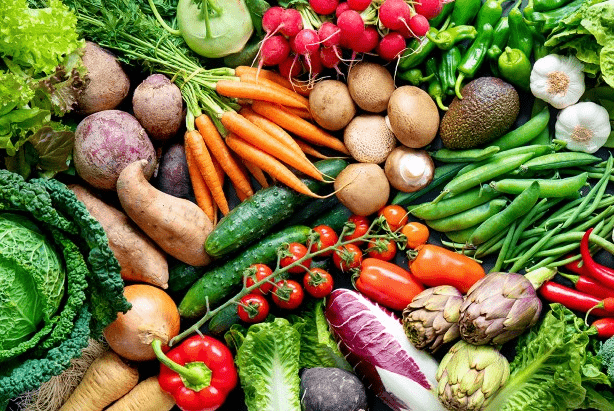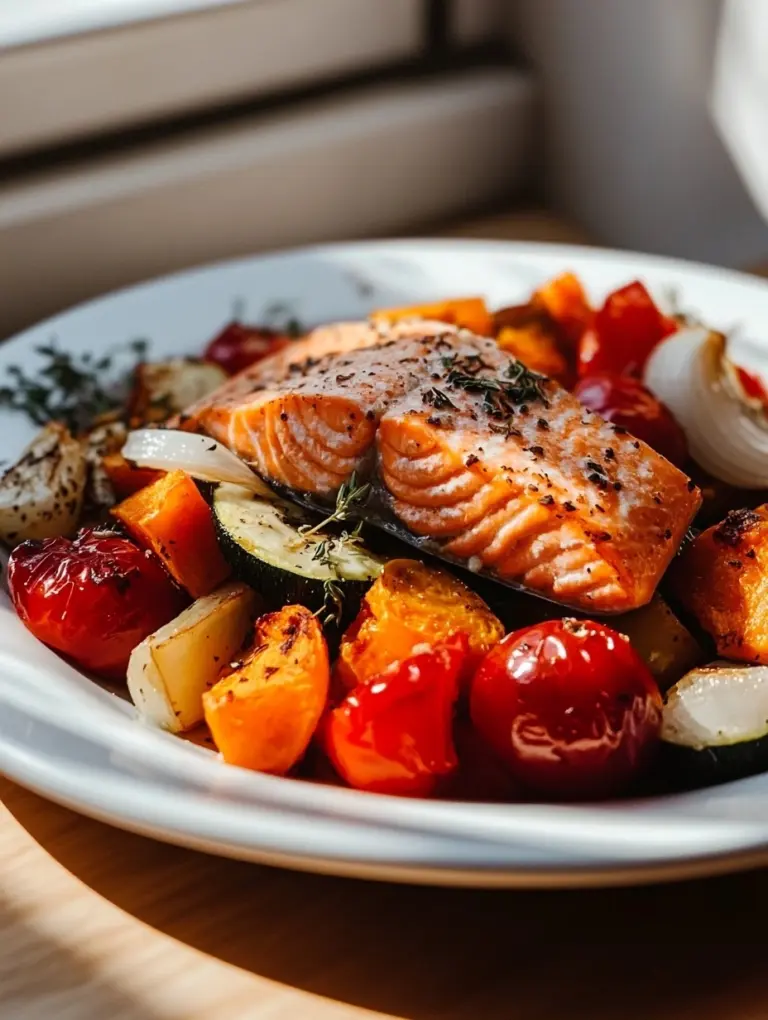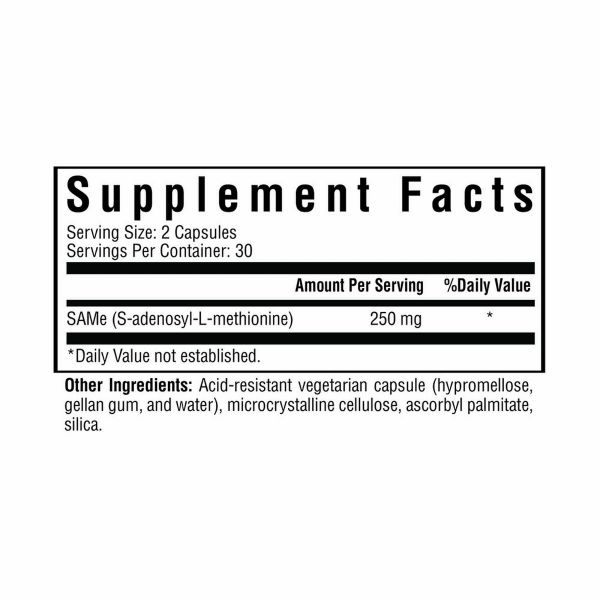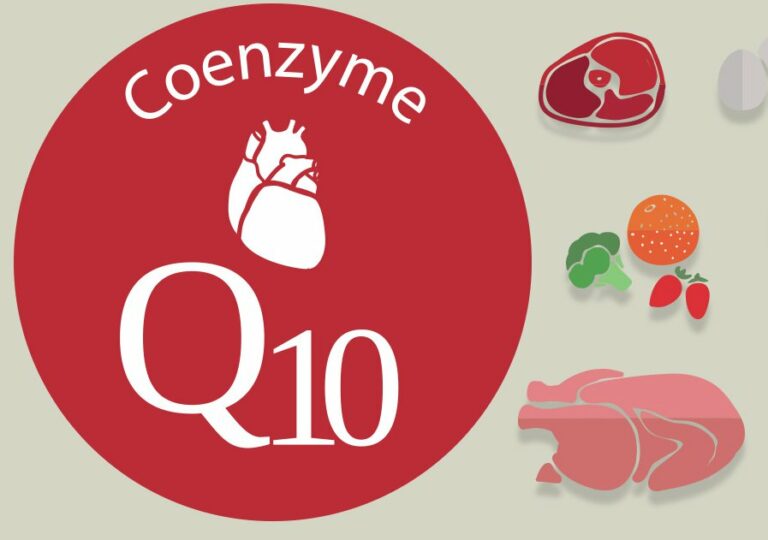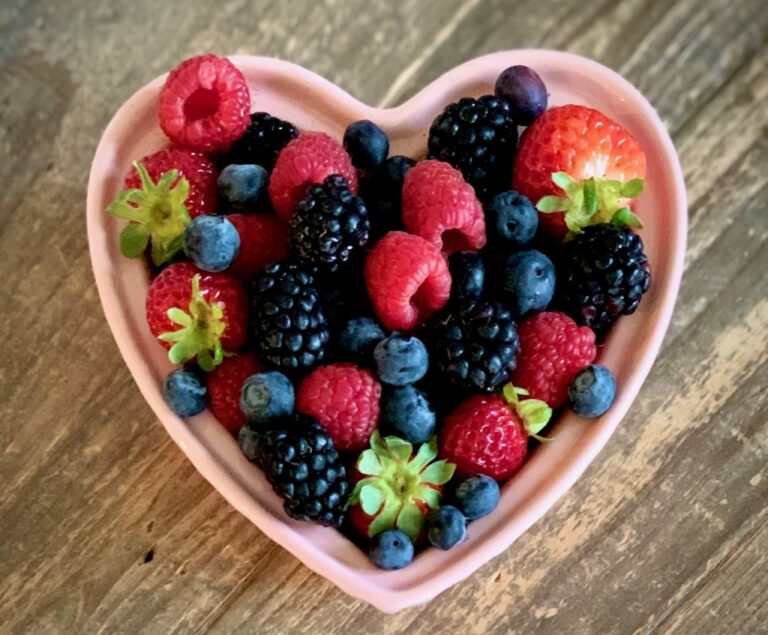Unleashing the Green Power – A Detailed Guide to Vegetables for Fitness and Bodybuilding
Here we go! Let’s talk veggies! Because honestly, in the…
Here we go! Let’s talk veggies! Because honestly, in the fitness world, especially bodybuilding, vegetables often get relegated to the side-lines. The thing you know you should eat but maybe don’t get too excited about.
If you’re serious about building muscle, boosting your performance, and feeling fantastic, especially as we navigate the over-50s fitness journey, then you need to unleash the green power of vegetables, those vibrant, colourful, earthy bundles of goodness that are so much more than just rabbit food.
Forget thinking of vegetables as just a low-calorie side dish. They are, in fact, nutritional powerhouses, packed with vitamins, minerals, antioxidants, and fibre – all the essential ingredients your body needs to thrive, especially when you’re putting it through the demands of regular training. Think of them as the unsung heroes of your fitness regime, working tirelessly behind the scenes to fuel your workouts, accelerate your recovery, and keep your engine running smoothly.
Are some vegetables less helpful than others when it comes to fitness and bodybuilding? That’s exactly what we’re going to explore in this guide. We’ll dive deep into the nutritional wealth of vegetables, highlighting why they are important for us. Then, I’ll reveal my top 5 most nutritional vegetables for bodybuilders – the absolute MVPs you should be piling high on your plate. And, just to keep things balanced, we’ll also look at 5 vegetables that are… let’s just say, less nutritionally dense – not to banish them from your diet, but to help you make smarter choices and prioritize the real veggie champions.
Ready to embrace the green revolution and unlock the incredible fitness benefits of vegetables?
The Nutritional Goldmine: Why Vegetables Are Your Secret Weapon for Fitness
Vegetables aren’t just about ticking a “healthy eating” box. They are, quite literally, bursting with nutrients that directly fuel your fitness journey. We’re talking about the essential building blocks and performance enhancers that can make a tangible difference to your workouts, your recovery, and your overall results. Let’s break down the nutritional goldmine packed into these plant-based wonders:
- Vitamins: Vitamins are like the spark plugs in your engine – they might be small, but they are essential for igniting countless processes in your body, including energy production. Vitamins like the B-vitamins (think B1, B2, B3, B6, B12, folate) are crucial for converting the food you eat (carbs, fats, and protein) into usable energy to power your workouts and your day. Then you’ve got Vitamin C, a powerhouse for immunity (especially important when you’re pushing your body hard in training), collagen production (for healthy joints and tendons), and a potent antioxidant. Vitamin A is vital for vision, immune function, and cell growth (including muscle cells). Vitamin E is another powerful antioxidant, protecting your cells from damage. And Vitamin K is essential for blood clotting and bone health, often overlooked but super important, especially as we age and want to keep those bones strong and resilient. Vegetables are absolutely loaded with these vital vitamins – getting enough through your diet is non-negotiable for peak fitness.
- Minerals: The Structural Steel and Performance Enhancers: Minerals are like the structural steel of your body – they provide the framework and support for countless functions, many of which are directly related to fitness. Iron is the MVP for oxygen transport, carrying oxygen to your muscles so they can work efficiently during workouts. Iron deficiency? Say goodbye to energy and hello to fatigue. Calcium isn’t just for bones (though it’s crucial for bone density, especially as we age and want to prevent osteoporosis). It’s also vital for muscle function and nerve transmission. Potassium is key for muscle contractions, nerve signals, and fluid balance – essential for hydration and preventing muscle cramps during those intense sessions. Magnesium is another muscle superstar, involved in muscle function, nerve function, blood sugar control, and blood pressure regulation. It also plays a role in muscle recovery and reducing muscle soreness. Vegetables are fantastic sources of these essential minerals – they are the unsung heroes keeping your muscles firing and your body performing at its best.
- Fibre: Fibre often gets overlooked, but it’s a game-changer for fitness, especially for us over 50s. Firstly, fibre is crucial for digestive health. It keeps things moving smoothly in your gut, preventing constipation and promoting a healthy gut microbiome (those trillions of friendly bacteria in your digestive system that play a massive role in overall health). A healthy gut means better nutrient absorption – you’ll get more out of all the good food you’re eating! Secondly, it adds bulk to your meals, making you feel fuller and more satisfied for longer. This is a massive win for weight management – when you feel full and satisfied, you’re less likely to overeat on less healthy, calorie-dense foods. Vegetables are naturally packed with fibre – they’re your secret weapon for keeping your gut happy and your appetite in check.
- Antioxidants: Intense workouts are fantastic for building muscle and boosting fitness, but they also create oxidative stress in your body. Think of oxidative stress like tiny little sparks of damage happening at a cellular level. This is a natural part of exercise, but too much oxidative stress can lead to inflammation, muscle soreness, and slower recovery. Antioxidants are amazing compounds, abundant in vegetables (especially the brightly coloured ones), act like your body’s repair squad, neutralizing those damaging free radicals and reducing oxidative stress. Antioxidants help speed up muscle recovery, reduce inflammation, and protect your cells from damage, keeping you feeling younger, stronger, and more resilient. Vegetables are antioxidant powerhouses – they’re your natural defence against workout-induced wear and tear.
Vegetables are fundamentaland absolutely essential for anyone serious about fitness and bodybuilding, especially as we get older. They’re not just about calories (or lack thereof), they are about providing your body with the micronutrients, fibre, and antioxidants it needs to perform, recover, and thrive.
Top 5 Vegetable MVPs for Bodybuilders:
Alright, now we know why vegetables are so crucial, let’s get down to the nitty-gritty: which vegetables should you be prioritizing? While variety is always key (eat the rainbow!), there are some veggie MVPs that go above and beyond when it comes to fitness and bodybuilding benefits. Here are my top 5, the absolute champions you should be aiming to include in your diet regularly:
- Spinach: This vibrant green leafy wonder is a true nutritional powerhouse, and it deserves a top spot on any bodybuilder’s plate. Spinach is absolutely loaded with:
- Iron: Essential for oxygen transport and energy production – crucial for those intense workouts.
- Magnesium: Plays a vital role in muscle function, nerve function, and muscle recovery – helps prevent cramps and soreness.
- Vitamin K: Super important for bone health and blood clotting – keeps your skeletal system strong and resilient.
- Nitrates: Spinach contains nitrates, which can be converted into nitric oxide in the body. Nitric oxide helps to dilate blood vessels, improving blood flow and potentially enhancing exercise performance and muscle pumps.
Why Spinach is a Bodybuilding Champion: Spinach ticks so many boxes! It’s low in calories, packed with micronutrients, and those nitrates are a potential performance booster. It’s incredibly versatile too – throw it in smoothies, salads, stir-fries, omelettes, soups, you name it! It wilts down to practically nothing when cooked, so you can easily sneak a huge amount into your meals without even realizing it.
- Broccoli: Don’t underestimate this humble green tree! Broccoli is a cruciferous vegetable that’s absolutely bursting with health-boosting compounds, making it a fantastic choice for bodybuilders:
- Vitamin C: A potent antioxidant, immune booster, and crucial for collagen production – supports joint health and tissue repair.
- Vitamin K: Essential for bone health and blood clotting.
- Vitamin A: Important for vision, immune function, and cell growth.
- Glucosinolates: Broccoli is rich in glucosinolates, which are converted into powerful antioxidants called isothiocyanates (like sulforaphane) in the body. These compounds have potent anti-inflammatory and anti-cancer properties, helping to combat post-workout inflammation and protect your cells from damage.
Why Broccoli is a Bodybuilding Champion: Broccoli is your anti-inflammation superhero! Those glucosinolates are particularly beneficial for reducing muscle soreness and speeding up recovery after intense training. It’s also a great source of fibre, helping with satiety and digestion. Pro-Tip: Don’t overcook broccoli! Steaming, roasting, or stir-frying it lightly preserves its nutrients and keeps it crisp and delicious.
Sweet Potatoes: Okay, sweet potatoes are technically a starchy vegetable, so they’re a bit higher in carbs than leafy greens, but they are still firmly in the veggie camp and deserve a place in your bodybuilding arsenal. Sweet potatoes are nutritional powerhouses, providing:
-
- Complex Carbohydrates: Provide sustained energy for workouts and replenish glycogen stores – fuel for your muscles.
- Fibre: Promotes satiety, digestive health, and blood sugar control.
- Vitamin A: Packed with beta-carotene, which your body converts to Vitamin A – essential for vision, skin health, and immune function.
- Potassium: Crucial for muscle function, nerve function, and hydration – helps prevent muscle cramps and supports electrolyte balance.
Why Sweet Potatoes are a Bodybuilding Champion: Sweet potatoes are the perfect “muscle-loving carb”. They provide sustained energy without causing blood sugar spikes, thanks to their complex carbs and fibre. They’re also packed with micronutrients that support muscle function and recovery. Pro-Tip: Get creative with sweet potatoes! Roast them, mash them, make sweet potato fries (baked, not deep-fried!), add them to stews and curries. They’re incredibly versatile and delicious.
- Kale: This leafy green is an absolute nutritional rockstar, boasting incredibly high levels of:
- Vitamin A: Off the charts! Kale is one of the richest sources of Vitamin A you can find.
- Vitamin C: Another antioxidant and immune booster, and vital for collagen production.
- Vitamin K: Sky-high levels! Kale is an exceptional source of Vitamin K for bone health and blood clotting.
- Antioxidants: Kale is packed with various antioxidants, including flavonoids and carotenoids, protecting your cells from damage.
- Fibre: Keeps you feeling full and supports digestive health.
Why Kale is a Bodybuilding Champion: Kale is simply a nutrient density champion! It delivers a massive dose of vitamins, minerals, and antioxidants in a low-calorie package. It’s a fantastic way to flood your body with essential nutrients to support overall health and fitness. Pro-Tip: Kale can be a bit tough and bitter raw. Try “massaging” it with olive oil and lemon juice to soften it up for salads. You can also sauté it, bake it into kale chips, or blend it into smoothies.
- Bell Peppers: Don’t let their sweet taste fool you – bell peppers are nutritional powerhouses, especially when it comes to Vitamin C. They come in a rainbow of colours (red, yellow, orange, green), and each colour offers slightly different nutrient profiles, but they are all excellent choices:
- Vitamin C: Absolutely loaded with Vitamin C! Red bell peppers are particularly high, often containing more Vitamin C than oranges! Essential for immunity, collagen production, and antioxidant protection.
- Fibre: Contributes to satiety and digestive health.
- Antioxidants: Bell peppers are rich in various antioxidants, including carotenoids and flavonoids, protecting your cells from damage and reducing inflammation.
Why Bell Peppers are a Bodybuilding Champion: Bell peppers are Vitamin C bombs! That high dose of Vitamin C is fantastic for supporting your immune system, especially when you’re training hard, and it also plays a key role in collagen production for joint health. They’re also delicious and versatile – eat them raw in salads, slice them for dipping, stir-fry them, roast them, stuff them – the options are endless! Pro-Tip: Choose red, yellow, and orange bell peppers for the highest Vitamin C content.
5 Vegetables to Include in Moderation (or Pair Strategically)
Now, let’s be clear: all vegetables are good for you! There’s no such thing as a “bad” vegetable in the context of a healthy, balanced diet. However, when we’re talking about optimizing your vegetable intake for fitness and bodybuilding, especially when aiming for nutrient density and specific fitness benefits, some vegetables are simply… less nutritionally dense compared to the champions we just discussed. These aren’t vegetables to avoid, but rather vegetables to include in moderation, or to pair strategically with more nutrient-rich options to create a balanced meal. Here are 5 vegetables that fall into this category:
- Iceberg Lettuce: Iceberg lettuce is the quintessential salad base, and it’s certainly low in calories and high in water content, which can contribute to hydration. However, nutritionally, it’s pretty… well, lightweight. Compared to darker leafy greens like spinach and kale, iceberg lettuce offers significantly fewer vitamins, minerals, and antioxidants. The Verdict: Iceberg lettuce is fine for adding bulk and hydration to salads, but don’t rely on it as a primary source of nutrients. Strategic Pairing: Use iceberg lettuce as a base, but load up your salad with other colourful, nutrient-dense vegetables like spinach, bell peppers, tomatoes, and carrots.
- Cucumbers: Cucumbers are incredibly refreshing and hydrating, thanks to their high water content. They’re also very low in calories and have a mild flavour, making them a popular addition to salads and snacks. However, like iceberg lettuce, cucumbers are not particularly nutrient-dense compared to other vegetables. They offer some Vitamin K and potassium, but in relatively small amounts. The Verdict: Cucumbers are great for adding hydration and crunch to your diet, especially in warmer weather. But don’t expect them to be a major source of vitamins and minerals. Strategic Pairing: Pair cucumbers with hummus or guacamole for a healthier snack or add them to salads alongside more nutrient-rich veggies and a protein source.
- Celery: Celery is another low-calorie, high-water content vegetable that can contribute to hydration and provide some fibre. It’s often touted as a “negative calorie” food (though that’s a myth – you still get calories from it!), but its calorie content is indeed very low. Nutritionally, celery is relatively low in vitamins and minerals compared to other vegetables. It does contain some Vitamin K and folate, but in modest amounts. The Verdict: Celery is a good choice for a low-calorie, crunchy snack, and it can add fibre to your diet. But it’s not a vitamin and mineral powerhouse. Strategic Pairing: Pair celery sticks with peanut butter or almond butter for a snack that provides some protein and healthy fats along with the fibre and hydration.
- White Potatoes: White potatoes are a starchy vegetable and a decent source of carbohydrates, which can be beneficial for energy. They also contain potassium, which is important for muscle function. However, white potatoes have a higher glycaemic index (GI) than sweet potatoes, meaning they can cause a quicker spike in blood sugar. They also lack the vitamin diversity of sweet potatoes and other more colourful vegetables. The Verdict: White potatoes can be part of a balanced diet, especially if you’re active and need the carbs for energy. But they shouldn’t be your primary vegetable choice. Strategic Pairing: Choose sweet potatoes more often than white potatoes. If you do eat white potatoes, bake them or boil them (rather than frying), and pair them with plenty of non-starchy vegetables and a protein source to balance out the meal.
- Corn: Corn is technically a grain, but it’s often grouped with vegetables. Corn is relatively high in calories and carbohydrates compared to most other vegetables, and it’s also sweeter due to its sugar content. Nutritionally, corn offers some fibre and some B-vitamins, but compared to the veggie MVPs we discussed earlier, it’s less nutrient-dense. The Verdict: Corn can be enjoyed in moderation as part of a varied diet. But it shouldn’t be your go-to vegetable for maximizing nutrient intake. Strategic Pairing: Enjoy corn on the cob occasionally or add a small amount of corn kernels to salads or salsas. But prioritize non-starchy vegetables like broccoli, spinach, and bell peppers as your main veggie sources.
Embrace the Green Revolution: Fuel Your Fitness Journey with Vegetables!
So, there you have it – your detailed guide to unleashing the green power of vegetables for fitness and bodybuilding, Hopefully, you’re now armed with the knowledge to make smarter veggie choices and truly appreciate the incredible benefits these nutritional powerhouses offer.
Remember, vegetables aren’t just a side dish – they are a fundamental pillar of a successful fitness and bodybuilding diet. They provide the vitamins, minerals, fibre, and antioxidants you need to fuel your workouts, accelerate your recovery, and achieve your goals. Load up your plate with those veggie MVPs – spinach, broccoli, sweet potatoes, kale, and bell peppers – and don’t be afraid to experiment with different varieties and cooking methods to keep things interesting and delicious.
Don’t get me wrong, protein and carbs are crucial too, but vegetables are the unsung heroes that often get overlooked. By embracing the green revolution and making vegetables a central part of your diet, you’ll not only boost your fitness performance but also enhance your overall health and well-being, especially as we navigate the over-50s fitness journey. It’s time to give vegetables the limelight they deserve and let them fuel your path to vibrant health and peak performance!
Disclaimer: This blog post is crafted for informational purposes and isn’t an endorsement of any supplements. Consultation with professionals is vital when making health or athletic decisions.

